Here are some details regarding the next, and probably last, phase of my 43 Foot DX Engineering vertical installation.
This post is very late. The actual date of the events within it are just before March 2009 in preparation for the Virginia QSO Party.
In the many posts within this site, it is no secret my examination of various vertical antenna solutions with comparison between BigIR and the 43 Foot products a big part of this. Check out all the 43 Foot posts on HHD here…
43 Foot Antenna Selected
I chose the DX Engineering 43 Foot quick taper model during the price war between DXE and Zero Five. Compromises understood and simulations complete, I carefully considered the Big IR, but liked the idea of no moving parts or switches at the antenna location.
Back in Black
A bare aluminum antenna would stand out too much in my neighborhood so I decided to paint the antenna black. Priming aluminum is a topic I researched very carefully to be sure I applied a lasting finish. As shown below, I applied regular flat black paint over the primed aluminum pieces except where the pieces slide into each other; If you are going to paint your antenna, you need to mask the mating four or five inches of the lower end of each tube.
Conductive Compound
I used the recommended aluminum conductive anti-oxidant compound suggested by DXE on all physically and electrically mating aluminum surfaces. This results is a gooey mess the first few times you apply, but you get the hang of the proper amount soon.
Antenna Tilt Base – Cumbersome
The “kit” from DX Engineering included an Antenna Tilt Base which I gladly installed. It works great. However, you need to really watch what you are doing when lowering the antenna. If you do not seat the lower pivot bolt properly, you will bind it and/or the top sliding bolt and may simply cut it off.
You are well advised to pay very close attention to what is happening to your tilt base while moving it. If you cannot handle the antenna yourself, enlist the aid of a friend who takes direction well. The good news is you will get the hang of raising and lowering your antenna as you realize you will need to apply some downward pressure during transition.
Basically, you will need to hold the antenna nowhere near its center of gravity and manipulate it just as if it was not attached to anything; You and your two widely spaced hands are the antenna support, not the tilt base pivot point. This ensures you are able to “encourage” the tilt base bolts into the correct slots and keep them there during lowering. The 43 foot antenna is not too heavy, but, in my opinion is very cumbersome due to its length and floppy nature.
Photo Gallery
Radials
You probably noticed only eight or so radials on this 43 foot antenna system. Yes, I know… I need more and plan on installing more soon. On 20 and 40 meters, the feed point impedance is something north of 200 ohms (or something highish). It does not take many radials to create a ground resistance lower than that. However, 60, 80 and 160 meters are a different story. I will add more radials.
Performance – Good enough
With all the simulations I performed in EZNEC…
…I was not expecting more out of this antenna than possible. I knew it would be pointless for 10 and 15 meters. It knew it would provide good results for 20 meters. It would be close to a 1/4 wave 40 meter vertical. It would provide some results on 80 meters. It would stink on 160, yet still provide “something” to use for this difficult band.
In short, it has met all my expectations quite well. I now have one antenna that provides access to the major low sunspot HF bands while sacrificing 15, 12 and 10 meters during this sunspot low. This was the plan for the 2009 Virginia QSO Party and that’s exactly how it worked out.
Comparisons
I had a 75 meter turnstile antenna in addition to this 43 footer during the March 2009 QSO Party. The turnstile out performed the 43 foot vertical in almost every way on 80/75 meters. However, I did use the vertical to pull out one of our roving mobiles about 250 miles away during the QSO Party – I transmitted to him on the turnstile and received on the vertical; I would not have been able to work him without the vertical in the mix. For those wondering, I use the 8 port DX Engineering remote antenna switch – the smaller one – at the end of 240 feet of LMR-400 coax for my ‘antenna yard’ switcher.
40 meters was a bit of a toss up. Most of the time I used the vertical. However, I occasionally tried the 80 meter turnstile on 40 and it did work.
20 meters was tough due to a big DX contest the same weekend as the Virginia QSO Party. I had a tough time competing with the big guns. However, casual operating later revealed the 43 foot vertical does work pretty well on 20 meters.
Attempts at 15 and 10 meter contacts with the vertical are laughable. Zero success, but that’s not a surprise, thus I am not worried about it.
Conclusion
I am very happy to have this antenna. Except for certain times of the year, it is the only HF antenna I have available operating year round. For a single simple antenna (remember no moving parts), it provides at least some coverage on 160-20 meters with best results on 40 and 20 meters. Good enough for the moment.
However…
Those sunspots are coming back and I will lust after a solution for 17-10 meters very soon. My next project will likely be the hex beam as a simple solution for those bands. I will need some kind of support for this antenna which adds to the complexity.
When you compare the steps required to raise even a modest antenna like the hex beam, it is quite obvious no antenna solution will be as simple as the 43 foot vertical even after I took the time to paint it black.
The 43 foot antenna provides, for me at least, a very good value for the money, real-estate and simplicity. I would do it again and humbly suggest it to anyone who needs a single, simple, reliable, stealthy antenna and/or wants an additional “choice” for their antenna farm.
See you on the bands…
73
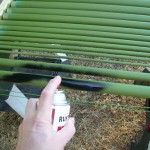
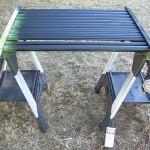
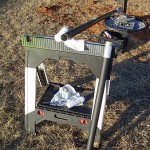
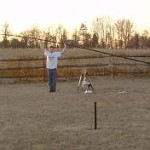
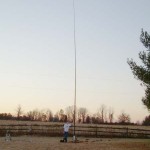
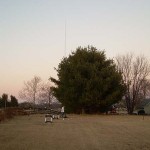
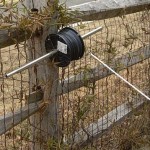
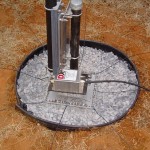
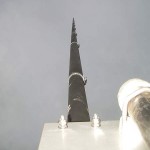

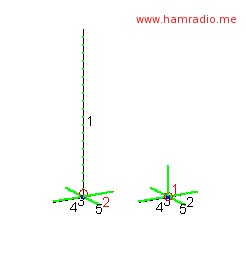
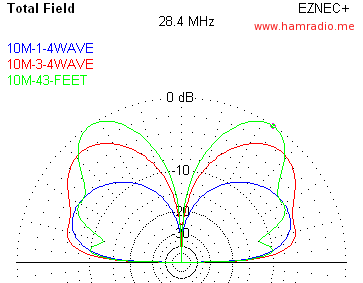
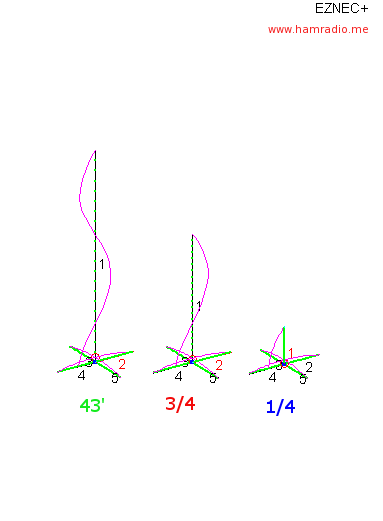
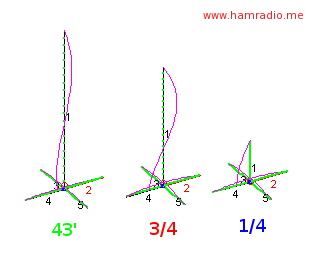
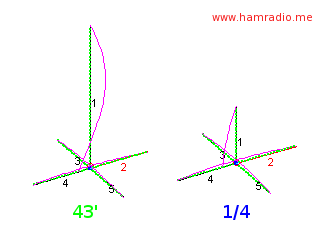
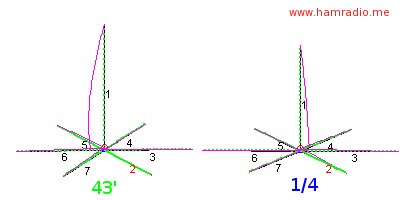

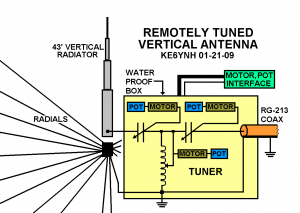
I cross-posted your article at http://sanantoniohams.org/blog/?p=2766 with a sub-header of "One Ham's struggle to get it up".
Thanks for sharing!
Lee N5NTG
SanAntonioHams.org
UPDATE Oct 2009:
I participated in the California QSO Party this weekend and enjoyed many 40, 20 and 15 meter contacts using just the 43 foot vertical antenna.
I looked at 10 meters too, but there was nothing to be found there.
So it seems the 43 foot ground mounted antenna provides at least some functionality for 15 meters given my many contacts between Virginia and California.
Hello– i am building a 43ft DXE Vert. My plan was to use it for 160-20. For 17 –> 10, I also was looking at a Spiderbeam. I am wondering if you did anything with a support system. I am also trying to figure out a support system, I have no plan to put up a tower. Thinking of a guyed mast, up 20-25 ft
Like you I use the 43 foot for 160-20 (mostly 40-20 really) and do have some success with 17-10. As you know it is not ideal for these higher bands. I did have a hexbeam, but never could afford a way to hoist it to a proper height. For the higher bands, I am experimenting with the AHVD antenna described elsewhere on this site.